Dweebing or ELSE, Star Wars
The QOTD will try to shine up her crown. (yeah yeah yeah...'try not," etc. blah blah blah).
First up, let's do things catterwompas and cruise through some pics on the FRONT end, shall we?!
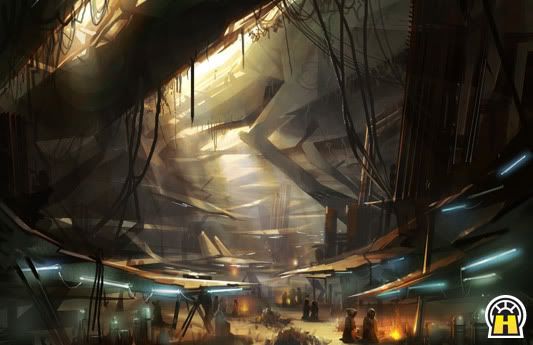
Yep. 2007 Sneak Pic. Camp Jawa. There's plenty of bargains to be had, but show up early; the good stuff gets picked over quickly.
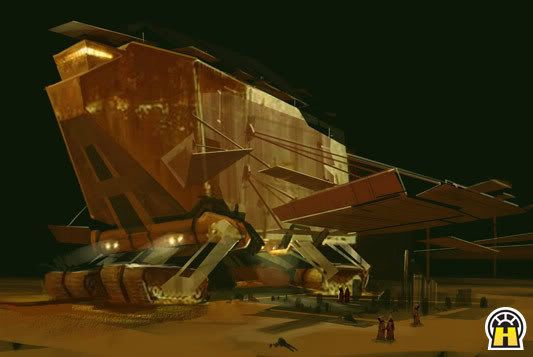
Another 2007 Sneak Pic. Cruising in Style. These Jawas have used their innate mechanical skills to truly trick out their treaded ride.
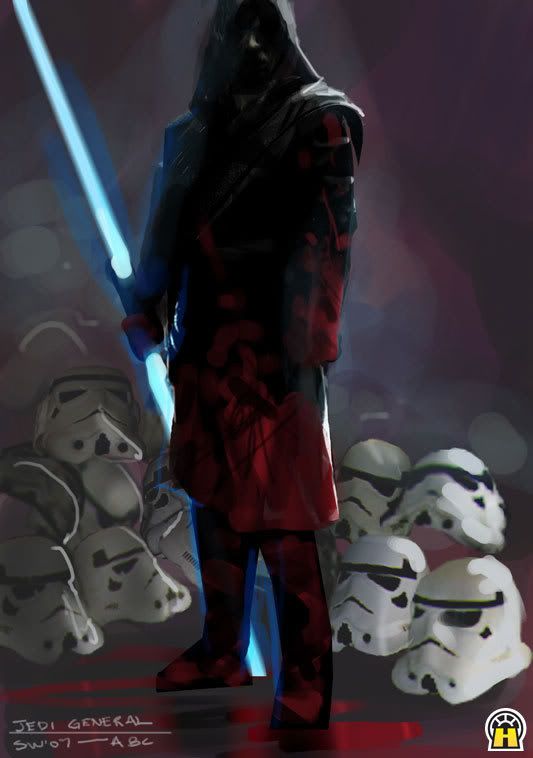
And still another 2007 Sneak Pic. Grim Trophies. As hobbies go, this one's hardly Jedi Code-approved.
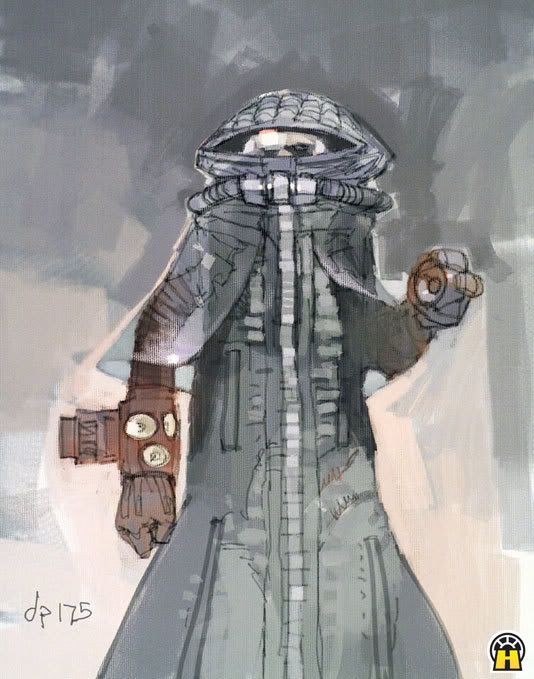
Early Mustafarian. Even before the world of Mustafar had been given its final name, Episode II concept artist Dermot Power was asked to think ahead and imagine its inhabitants.
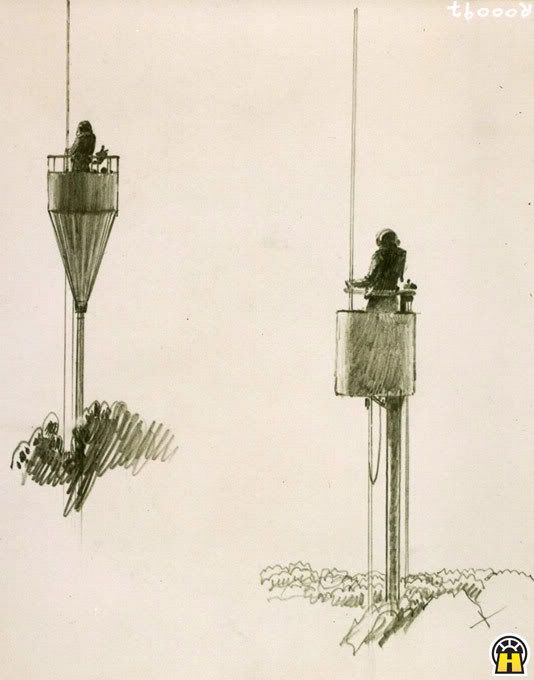
Yavin Sentry. Ralph McQuarrie illustrates a memorable, iconic image from Star Wars, the lone Rebel sentry on Yavin 4.
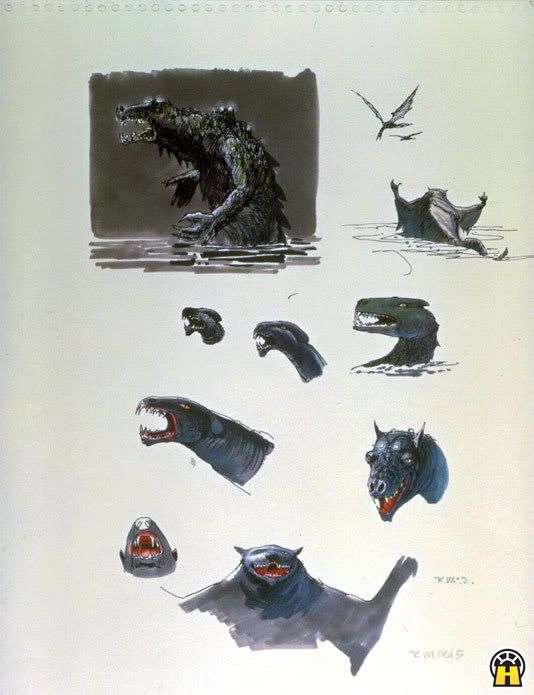
Swamp Monsters. Ralph McQuarrie's concept illustrations for the creatures that inhabit the murky waters of Dagobah.
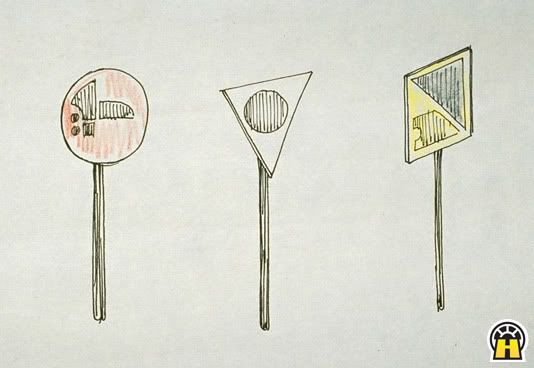
Lollipop Lollipop. Some prop illustrations by Costume Designer John Mollo for hand-held beacons used by both Rebel and Imperial forces.
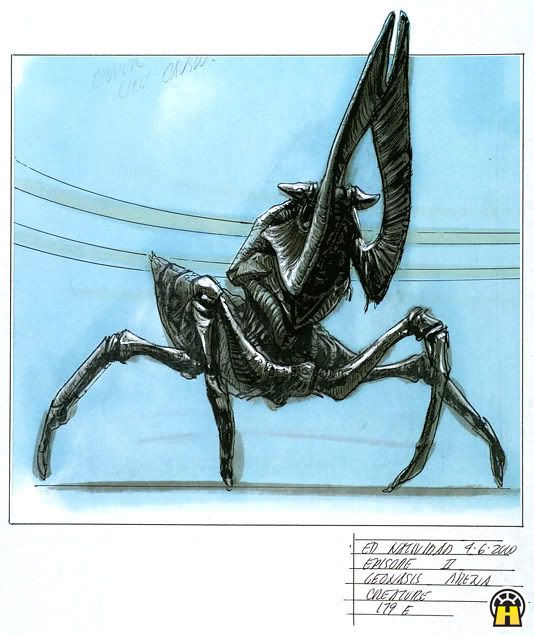
Dread Lobster. Ed Natividad's concept illustration of the acklay arena monster, which at one point was described as a cross between a dinosaur and a lobster.
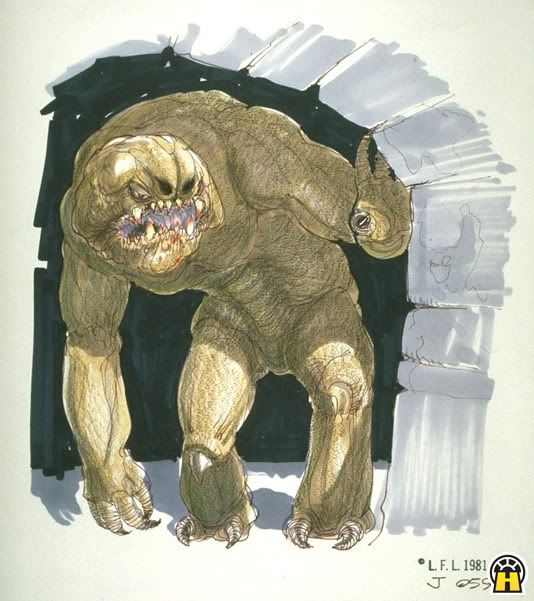
The Beast from Below. A Joe Johnston illustration depicting a rancor with very humanoid proportions -- consistent with an early abandoned approach to depict the creature with a man in a suit.
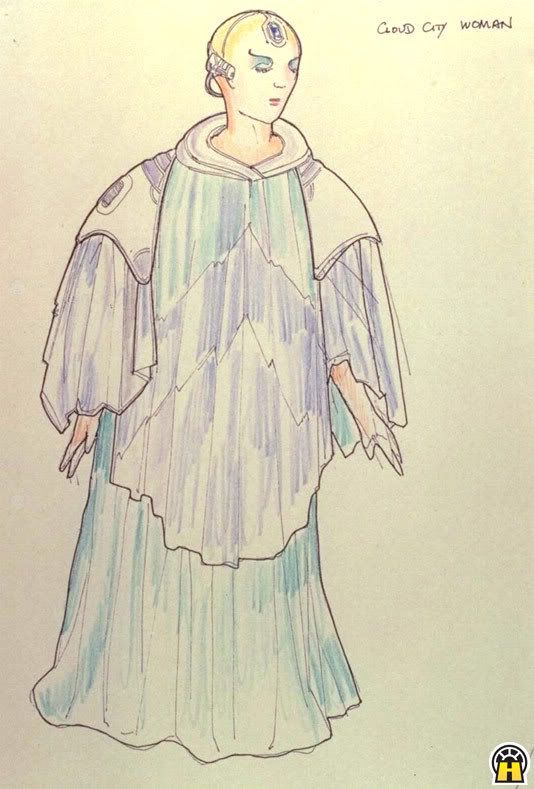
Cloud City Woman. John Mollo explores the look of Cloud City in this illustration of one of its denizens.
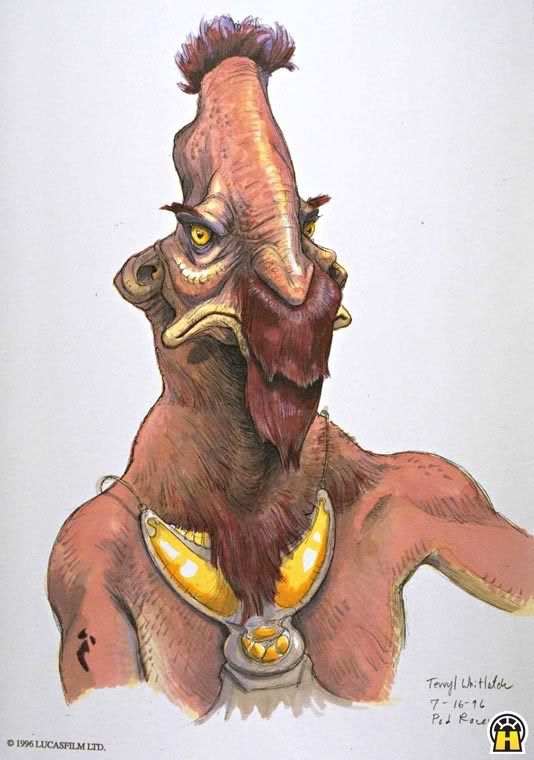
Toy Dampner. This unused Podracer pilot design by Terryl Whitlatch became the basis of Toy Dampner, a racing champ seen in Expanded Universe video games.
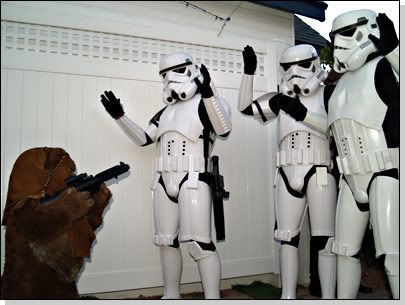
Jawa Dream Sequence
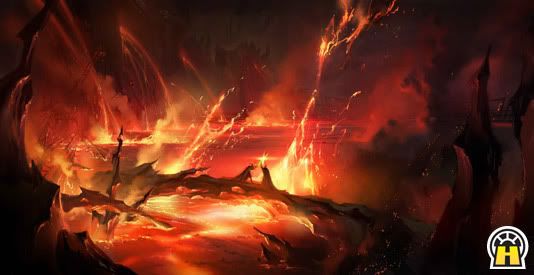
Dueling in Chaos. Amid the hellish landscape of Mustafar, lightsabers clash.
Comfortably Nunb

Puppeteer Mike Quinn has brought to life numerous Star Wars characters including a Wol Cabasshite, Ree-Yees and Sy Snootles, but it's his performance as the brave Sullustan Rebel pilot Nien Nunb in Return of the Jedi that made his work most memorable with fans.
"My very first Lucasfilm project was Revenge -- er, I mean Return of the Jedi," Quinn says. "I was already a big fan of the first Star Wars movie and an even bigger fan of The Empire Strikes Back -- especially because of Yoda. I was still finishing school around the time Empire was about to come out. Already being a Muppet fanatic, I saw all the pre-publicity coming out about Yoda and got a look at all the pictures. Knowing some of the Jim Henson guys were involved -- especially Frank Oz -- I was really curious to see how this Yoda would move."
"So that summer when Empire finally came out, I was just fascinated by Yoda -- and so was the audience," Quinn recalls. "They would always fall silent when Yoda came on screen. Talk about cinema magic! No one had seen anything like that before. I recall a kid sitting behind me asking his father how Yoda was done and the father wanting to be all-knowing said 'it's a person in a suit.' I think a lot of people must have thought that. Since then, there has been The Dark Crystal, E.T. and many more so people are used to seeing animatronic puppet creatures, but that was a first and it was great!"
Working at the famous Elstree Studios amongst Kermit the Frog and his crew, Quinn waiting for his chance to star with creatures in a galaxy far, far away.
"Elstree Studios was a great place in the early '80s," Quinn recalls. "'The Muppet Show' was shot right across the street from the film studios. My first movie was actually The Great Muppet Caper. They had not long finished shooting Raiders of the Lost Ark there and lots of set artifacts were still lying around. By next movie, The Dark Crystal, they were already making noises about [the next] Star Wars. So as Dark Crystal was drawing to a close, production offices were gearing up for Return of the Jedi. The producer, Robert Watts, interviewed several of the puppeteers and mimes Editor's Note: EEK, MimeS! from Dark Crystal and it was that simple. I was at the right place at the right time. All I had to do was have a nice little chat in his office and I was hired. No audition or anything! We were shooting by the following January."
As the co-pilot to Lando Calrissian aboard the Millennium Falcon, Nien Nunb is a crucial member of the Rebel Alliance. The small, mouse-eyed pilot may look lifelike, but that's all due to the wizardry of Quinn's puppetry skills.
"Some fans probably don't realize Nien Nunb was actually a puppet in the cockpit," Quinn says.Editor's Note: Count ME as one of the ones that did not know that! "That puppet weighed a ton too. I remember getting terrible motion sickness in that cockpit!. The stage hands would bounce that thing around all day to simulate the flying and battle. I couldn't see out as I was under the puppet so I was pretty green by the end of each sequence."
Nien Nunb was not the only Sullustan Quinn had a hand in; lesser known is Ten Numb, a fighter pilot who has recently been immortalized as an action figure.
"We shot Ten Numb in a B-wing cockpit," Quinn continues. "Those scenes were cut and are probably waiting to be discovered in the archives somewhere. I had to improvise the whole thing as there was no scripted dialogue and they were just generic cutaways for the space battle at the end. I said some pretty stupid things about not getting good reception of his favorite radio station out in space. These days, the Lucasfilm archives take good care of Nien Nunb for me and have preserved him for future aliens to enjoy. Another point of trivia that fans might be interested to know is that he was named Nien Nunb because he was number nine on the shipping list to London."
Though many films today seem to be a showcase for the latest CGI breakthroughs, Quinn is convinced there's still a place for puppetry skills on the big screen.
"Puppetry has actually been around for thousands of years and will continue to be," Quinn says. "There has been a pendulum swing back to puppets in the entertainment industry in the last year or two interestingly enough. I've built and performed quite a few characters recently for TV with more in the works. In a way, animation is a kind of puppetry -- especially now as I can use those same puppetry skills to perform CG characters for film in real time. There's an evolution and it's up to people like me to take puppetry to new places. It's what Jim Henson would have done if he were still alive today. He loved the technology and what it allowed him to create. So if anything, puppetry will still be around in its many forms only perhaps with more diversity and computer integration, it's not going away."
Editor's Note: Next up...fun with the EU (I just LOOOOVVVVE this stuff):
What's the Story, Round 7
Once again, Hyperspace members have delivered new names and stories to existing faces in the Star Wars Expanded Universe. It's called What's the Story, and it's a chance for Fan Club members to flex their creative writing abilities to help populate the Star Wars galaxy.
Here's the latest batch.
NOBOT (Episode 1)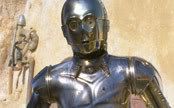
For two peggats, Jira the aged marketplace vendor will tell the tale of Mos Espa's mysterious robotic nomad. Known to some as "Ghost Droid," to others as "Nobot," the burned out 3PO unit wandered aimlessly across the searing sands of Tatooine, and despite the relentless heats or avaricious Jawas, always managed to find its way back to Mos Espa.
According to Jira, the droid first appeared decades ago, covered in dried blood, bearing the scorch marks of blaster fire, its serial number scored off preventing identification. Jira told of how the droid is the sole surviving witness of the horrible murder of a young pregnant woman. From its communications module emanates the voice of the woman crying for help, pleading for her attacker to stop, and then a shrill scream punctuates the recording, followed by a long period of static-laced silence before the recording repeats.
Some, of course, believe it was the droid who was the murderer.
The more incredible rumors describe the droid as being possessed by evil spirits or that it is somehow surrounded by the dark side of the Force. Tusken youths using it for target practice inexplicably find their rifles jamming or backfiring. Gangs trying to tear it apart with hooks and chains lose control of their swoops when their engines malfunction or their control vanes shear off. Every group of mischievous farmboys who would take the droid into the middle of the Dune Sea or even the Great Pit of Carkoon would eventually learn of their failure when the droid came wandering back to Mos Espa.
The tale is Jira's, for she is the best at spinning it. Those with attentive ears, nearby stalls and unchecked greed have begun competing with the old woman, telling their own versions of the story peppered with even more fanciful anecdotes and odd occurrences.
NAR HIDA (Episode 2)
Never one to shy away from a challenge, Nar Hida brought his wife and daughter to Coruscant to open a boutique specializing in Luptoomian fashion. Within a year, poor sales forced him to close the store, and bad business deals with the shady Baath Brothers left him destitute. To make matters worse, the Hidas found themselves trying to return home in the midst of the Separatist crisis.
Spending the last of his savings, Nar secured passage for himself and his family aboard the Jendirian Valley, the sole starfreighter he could find not already filled to capacity with refugees. Unfortunately, the freighter was only traveling halfway to Luptoom, threatening to leave the Hidas stranded and creditless at the end of its journey.
As the freighter made its way through hyperspace, Nar grew increasingly desperate. Although he had never done anything criminal in his life, he resolved to get his family back to their home on Luptoom by any means.
Nar hesitated for only a moment when presented with an opportunity to rob a sleeping Bith passenger. Just as he was about to act, however, an intense-looking young man grabbed him by the arm and pulled him aside. The man warned Hida that the sleeping Bith had a blaster pistol hidden in his jacket and would have certainly killed the would-be thief. The nervous Nar was full of disbelief, but the young man's companion, a beautiful woman with warm brown eyes, told Nar to trust the warning, as the man had the ability to see things before they happened.
The woman gave Nar a handful of Republic dataries and instructed him to contact the Refugee Relief Movement upon arrival at Naboo. Nar did as instructed, and the volunteers in the movement helped the Hida family return to Luptoom.
Once Nar was able to turn his fortunes around, he made it a point to contribute regularly to the Refugee Relief Movement as it continued to work during the Clone Wars. Inspired by the generosity of the anonymous young couple he encountered on the Jendirian Valley, he was determined to help those in dire situations mirroring the ones once suffered by his family.
CEBANN VEEKAN (EU)
Cebann Veekan started out as a mid-tier holoperformer in low grade comedies and horror stories before the Imperial Entertainers Guild excessive "loyalty purges" made it harder and harder for non-humans to find work. Editor's Note: Shame on those theaters for not going with Species-blind casting!
Eventually, Veekan drifted into various non-Guild theater productions, performing in plays for audiences that, for the most part, seemed completely indifferent to the performance so long as there was alcohol being served. Editor's NOte: They say this like it is a BAD thing?
Veekan wound up in Tatooine's dismal live performance scene, and when not in one of the few decrepit buildings that passed for theaters in the port city, he could be found drowning his sorrows in Chalmun's cantina.
There, he met Ackmena, the night-shift bartender whose penchant for singing and performance matched his own. Together, they worked to create their own troupe and arrange performances at the cantina itself. Chalmun allowed it, provided the shows added to the bar's bottom line.
They struggled just shy of success, but achieved acclaim and attention following the defeat of the Empire at the Battle of Endor. Veekan and Ackmena capitalized on the heroics of the now-legendary local hero Luke Skywalker by creating a theater show based loosely on his exploits. Becann played the lead, and became somewhat of a local hero himself, performing the role for many years in front of audiences that grew large enough to demand a proper venue.
Becann played the role until he eventually became too old, and even after retirement continued teaching younger students the part and helping out behind-the-scenes. Editor's Note: So if Coruscant is Broadway (or the West End), is Tatooine Topeka? (And Community Theater). Oh, and I guess Chalmun's is sort of like IBP? (A little Houston theater joke....sorry....)
Y'BITH (EU)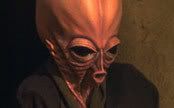
Millions of years ago, sentience took root among the ancient forerunners of the Bith species on Clak'dor VII. As the Bith evolved, they developed impressive cities in the mountains and jungles of their world. The capital city of Weogar and the domed city of Nozho stood for centuries as testament to the achievement of the proto-Bith culture, but relations between the cities soured, and they developed a fierce rivalry.
About three hundred years ago, the tensions boiled over as a dispute over a stardrive patent ignited in a civil war. When the war finally ended, Clak'dor VII's biosphere was ruined. A biological attack launched at Nozho had shattered the city, mutating its populace, and the surrounding wildlife.
Most Nozho citizens were killed outright, but many who survived developed mutagenic irregularities that soon led to the creation of a subspecies of Bith. The Y'bith -- which translates as "Ghost Bith," eventually left the hermetically sealed cities that were built amid the ruins, and attempted to establish a permanent population on Clak'dor IV, where they eventually founded the city of New Nozho.
The bio-engineering geniuses among the Y'bith stabilized much of the mutation's worst effects, but the populace had to adapt to their new traits of poor eyesight, stronger hands and feet, ductile mouth structures, sensitive skin and thicker bones. The Y'bith have been tolerated by the Bith, though not openly accepted by mainstream Bith culture. Though some claim residual guilt over the bombings that created the Y'bith as the cause of Bith apprehension, the Bith themselves pragmatically deny such reasons. They cite the Y'bith's volatile biochemistry that triggers bouts of violence and aggression as reason enough to keep their distance.
The Y'bith have been working to gain acceptance as members of the galactic community, with New Nozho becoming a notable trade port. Over the course of generations, the Y'bith had spread to other worlds, forming a notable minority presence on Nar Shaddaa and Coruscant, where they aided the rebuilding efforts following the Yuuzhan Vong war.
The Y'bith see the story of their people as one of success, and will continue working tirelessly until the whole galaxy, including their Bith cousins, agree.
MYHR RHO (EU)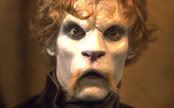
Since he was a cub, Myhr Rho dreamed of owning a successful business. Sadly he had been brought up far from the grassy savannas of his homeworld Cathar and out of reach of the galaxy's more prosperous regions.
All his life he had hated the parched planet of Tatooine where he had been forced to make his home. The blazing heat of the twin suns meant he had to cut his mane short to keep cool and their light was unpleasant for a naturally nocturnal being. He was unable to find a decent job that suited the business acumen he believed he had since most employment opportunities on the impoverished planet were less than legal. Myhr had no desire to be involved with anything dangerous or violent.
Myhr tried to save money so he could one day leave Tatooine but most of the time he gave in to temporary comforts and could often be found drinking and carousing in the Cantina. When news of Palpatine's death at the Battle of Endor death reached Tatooine though, Myhr's dreary life changed. The uproarious celebrations in Mos Eisley lasted a long time and Myhr began to think of ways to take advantage of this new era of freedom.
To his surprise he learned that Luke Skywalker, a hero of the rebellion, had once lived on Tatooine. After witnessing the successes of plays produced by Cebann Veekan and Ackmena based on Skywalker's exploits, Myhr put all of his efforts into researching Skywalker and his life on Tatooine. He then set about turning it into something profitable. Myhr realized that once Skywalker's deeds became more widely known many people would be interested in his homeworld and want to visit the important sites of his life there.
He scraped together the money to buy a small used sail barge and set up the "Skywalker Tour." Visitors to Tatooine would be taken to all the places important in Luke's life including the site where R2-D2 and C-3PO's lifepod crashed, the Lars homestead, Ben Kenoibi's former home, Jabba's Palace and the Pit of Carkoon. Editor's Note: So this guy runs sort of a "Weekee Watchie Springs" tacky tourist opperation!
Tourists came in droves and Myhr was a success at last. He conceded that maybe Tatooine was not such a bad place after all.
Star Wars Artist Series: Steve Anderson
A Year-Long Tribute
Whether it's the cover of a bestselling novel or an illustration printed on a whimsical jigsaw puzzle, Oregon-based artist Steve Anderson has spent his career paying tribute to a franchise that sparked his imagination as a young child sitting in a movie theater one fateful afternoon in 1977.
"I have always been drawn to the big screen, and Star Wars was a perfect movie with all the space action," Anderson says. "When that huge Star Destroyer virtually covered the entire screen at the opening of the movie, I knew we were in for something special. However, the huge ship wasn't what turned me into a fan as much as the story of Luke Skywalker. I think boys and girls alike could relate to Luke and the struggles he was going through -- particularly his desire to go out and be a part of something important."
Much like Luke, Anderson shared a similar desire to expand his horizons even at a young age. "When I was little, I drew a lot and always loved going to art classes, going to movies and building models," Anderson remembers. "I knew I wanted to do something creative in the future; I just didn't know exactly what."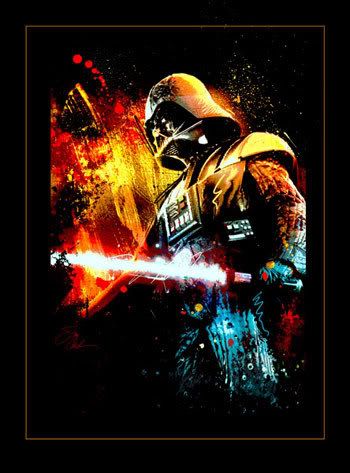
Anderson's father, a self-taught artist, also inspired Anderson to follow his dream. "I remember our house in California where, on our living room wall, he actually drew a life-size sketch of several horses," Anderson says. "I wanted to be just like him but my involvement in art ebbed and flowed as other interests were explored. When it was time to go to college, I thought I'd pursue a career in commercial art and design logos for a living. I didn't know about art schools; otherwise I might have chosen that path and had a better focus. Instead, I went to a four-year college where I was introduced to the airbrush and loved it."
Following college, Anderson worked at a company designing and illustrating T-shirts. "After several years, I went to work for the Hallmark Cards headquarters in Kansas City, first as a creative on-call freelancer and then full-time in the Packaging Design department. It was there that I was introduced to the computer as an artistic tool, and I put all of my focus into developing my skills in digital illustration -- taking every opportunity to learn as much as I could about computer design and illustration -- on the job. So like my father, I have ended up being more self-taught in the actual ways I work as an artist today."
After a few years in the Packaging Design department at Hallmark, Anderson moved to the Calendars and Puzzle division where he found himself designing a Star Wars 12-month wall calendar.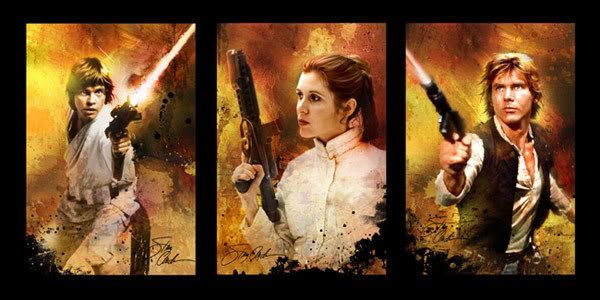
"No art direction was given, so it was totally up to me," Anderson remembers. "It was 1993 and George Lucas didn't announce that work would begin on the long awaited prequels until 1994, so I had to bone up on Star Wars again. I started by going through all the materials I was given by Lucasfilm and came up with a few panels to present. Doing major licenses like Star Wars on calendars was sort of a new thing, so instead of presenting to the regular Calendar and Puzzle staff, I had to present my ideas to the Licensing division of the company and to Lucasfilm's Director of Licensing and Director of Merchandising. It was a very large greeting card company so I was accustomed to presenting in big meetings, but I had never been to the Licensing division or made a presentation to Lucasfilm. I was a very nervous. Luckily, they liked what they saw and invited me to go to Skywalker Ranch to browse through the Archives and select some reference material."
Once Anderson returned home, he got a new wave of inspiration and decided to take a risk by changing the direction of the calendar designs that were already approved. When he sent Lucasfilm his final calendar art, he knew the reaction could go either way. "I can still remember sitting in my office and getting a conference call from Lucasfilm people who wanted to discuss the project," Anderson says. "They didn't call my supervisor or my manager first; they just called me directly."
They approved the new direction and Anderson was soon off and running on another project that appealed to his inner child. "Then they asked me to design a 1,500-piece, 28" x 36" Star Wars puzzle," Anderson says.
From Neckties to Book Covers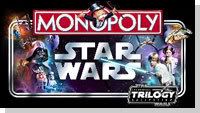
The next projects on Anderson's list included more puzzles and calendars for The Empire Strikes Back, and Return of the Jedi -- in which he made a job transfer to continue his stride as a licensed artist. "I found out that the next year the Return of the Jedi calendar and puzzle would be done by my company's Licensing Department instead of my division," Anderson explains. "Since Licensing was where I ultimately wanted to be, I immediately put in a transfer request. It took almost a year to make the transfer, but I made it just in time to do the calendar and puzzle! The puzzle was never produced, but there were several press proofs made, a few of which I still have. The Empire piece that is on my website with the logo is the puzzle illustrated back in 1995."
Proving his talent for game illustration, Hasbro took notice and asked Anderson to create art for a number of games and toys. "I've been fortunate to have been able to illustrate 28 Star Wars puzzles related to the prequels, the package illustration for the George Lucas Family Action Figure Collector Set, the box top illustration for the Trivial Pursuit DVD Saga Edition including the six triangular illustrations on the game board, the cover illustration for Monopoly: Original Trilogy Collection, the Revenge of the Sith lightsaber packaging, and additional action figure packaging. Most recently, Anderson illustrated the Star Wars 30th Anniversary Coin Album, the cover of which contains an illustration spanning the entire saga in chronological order.
His illustrations were also used for both the Lucasfilm Licensing prequel and classic style guides. As a result, his illustrations have been used for Star Wars posters, comic book covers, mugs, T-shirts, cell phone covers, calling cards, skateboards, backpacks, and more. "Some of the more unusual products my art has appeared on include birthday cakes, neckties, tables and chairs, trash cans, personal care products, popcorn buckets, bandages and the personalized pictures at Disneyland," Anderson says.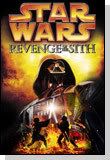
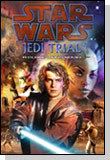
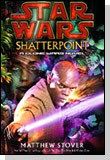
Anderson was also given the opportunity to try his hand at book illustration. "I enjoy Star Wars illustrating book covers because I know it's a product that is going to have a lot of exposure," Anderson explains. "The books always make it high on The New York Times bestseller list, so with that comes an incredible drive to do your very best -- even though you may be loaded down with other work. It's also quite a challenge to try to tell the story of the book with just a few images and very little (as far as finished story) to go by. The covers are used for solicitation purposes, so most of the time they are illustrated way before the manuscript is even finished."
For Random House Books, Anderson illustrated covers for the movie novelizations for both Attack of the Clones and Revenge of the Sith. Other cover illustrations include Labyrinth of Evil, The Cestus Deception, Tatooine Ghost, Survivor's Quest, The Approaching Storm, Shatterpoint, Jedi Trial and Yoda: Dark Rendezvous.
From the New Essential Guide series, Anderson created cover art for The New Essential Guide to Characters, The New Essential Guide to Weapons and Technology, The New Essential Guide to Droids, The New Essential Guide to Vehicles and Vessels, The New Essential Guide to Alien Species and The New Essential Chronology.
And from The New Jedi Order series, Dark Journey and Traitor showcase his art. Anderson even left his signature style on the E-Novellas Boba Fett: A Practical Man, The Hive - A Clone Wars Novella, Fool's Bargain and A Forest Apart.
Use the Muse
As Anderson continues to hone his skills as a Star Wars artist, he says that the legendary artists Ralph McQuarrie, Joe Johnson and Drew Struzan are continual inspirations. "My introduction to the art in the Star Wars world was Ralph McQuarrie," Anderson says. "When I started working on that first Star Wars calendar in 1993, I had access to all of his concept drawings and paintings. His and Joe Johnson's artistic talent brought George Lucas's ideas to life. They gave the classic trilogy a look and feel that we could relate to -- a world that has been lived in just as it is here on Earth."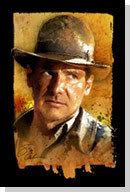
"However, by far the most influential in my career was Drew Struzan," Anderson continues. "In the mid-'90s, while doing the early Star Wars calendars and puzzles, I would walk across the street for lunch and, afterwards, stop at the book store to look at and admire Struzan's beautiful book covers. Another strong influence from that time was Mathieu Lauffray who illustrated the Dark Horse comic covers series The Last Command and the series Dark Force Rising. Hugh Fleming, who illustrated the Dark Horse comic cover series Tales of the Jedi also impressed me. It was that initial Star Wars calendar work and the influence of those three artists that seemed to light a fire within me and take me professionally in a new direction."
With a seemingly endless list of projects, Anderson says he deals with many of the same challenges other artists face. "Having multiple deadlines in the same week or, on the flip side, days when I have completed all jobs and don't know when the next job will come is something that can be rather stressful," Anderson explains. "Working from home with three kids isn't easy either, especially when my six-year-old son wants to play Lego Star Wars with him. Trying to make clients happy at all costs often means working until 3 or 4 A.M. and not doing much of anything other than work for weeks on end. As an artist I don't have job security so the quality of the most recent work I do determines future work -- so I work hard!"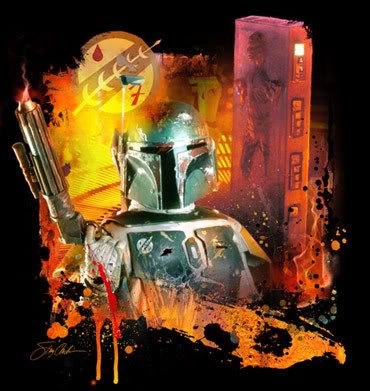
When Anderson begins a new project -- whether it's a book cover or collectible coin album -- his process always begins the same way. "I usually start with some kind of neutral color background color in Photoshop, then I'll paint a texture to scan in or use part from an existing texture just to give the background a little dimension and interest," Anderson explains. "Most of the background that I start with gets covered with new background and characters as I continue to work. Then I just start trying different combinations of characters requested for the piece. I may spend hours posing the characters in different positions and sizes until suddenly something clicks into place. To me, establishing a good composition, a good interaction between the characters, is the most important and time-consuming part of whole process. I have a kind of love/hate relationship with the composition phase."
"Once I get the composition down, the fun part begins," Anderson smiles. "I'll bring the main character of the piece to life with lighting, shading, coloring and so on. Next I'll work on the area surrounding him, building it up around them and maybe a color to get whatever feeling I'm trying to convey. Slowly I'll continue in this manner as I work my way outward from the central character until everything feels right and balanced. When it's 95 percent done, I'll leave the piece for a day and do something totally different, then come back to it, take a look at it from about 10 feet back with fresh eyes. Instantly, I'll see things that I need to change. That kind of process works best for me."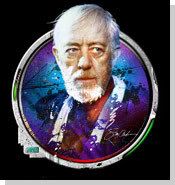
While artists have their own system that works best for them, Anderson says that he hopes people let their muses guide their projects, instead of the pressure to make money. "Do artwork involving a subject matter that you really love and that inspires you," Anderson says. "If you don't feel inspired, you'll never create a good piece. Once you can consistently create art that pleases you, move on to subject matters that will actually get you work. As an artist, I really feel like I've just scratched the surface of what I want to do. I'd love to keep creating Star Wars art forever."
To read more about upcoming projects from Anderson, visit his official site here. (http://www.steveandersondesign.com/)
AND SOME SHOPPING:
New Darth Vader USB Flash Drives Now at StarWarsShop
Darth Vader, the first in the Star Wars mimobot series from mimoco, is now available at StarWarsShop in 1GB and 2GB capacities!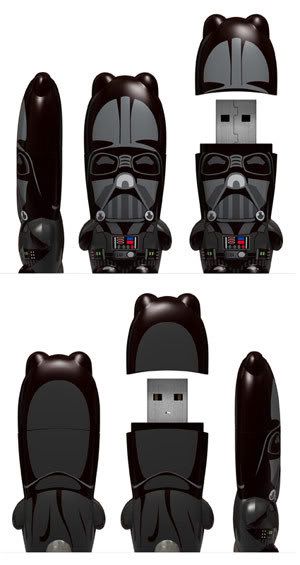
By working with Lucasfilm, mimoco has recreated some of the Star Wars galaxy's quintessential characters and fashioned them into the perfect mix of form and function. Using Darth Vader as a means of data storage and transport is guaranteed to intimidate all of your Rebel enemies and bring the dark side into your life. While adhering to the classic mimobot form, Darth Vader and the three other soon-to-be announced characters have been specially designed to conform to Lucas Licensing's exacting standards. The result is another of mimoco's detailed and beautifully produced collectable USB Flash Drive series.
Continuing the mimoco tradition of packing mimobots with exclusive content, the memory keys will come preloaded with bonus removable Star Wars materials ranging from avatars and wallpapers to videos and soundbites. Each character is produced in a limited edition of only 2,500 to 3,500 units. These officially licensed Star Wars mimobot Designer USB Flash Drives are the ultimate in form, function, and fan fashion.
Head on over to StarWarsShop now to pick up Darth Vader, the first in the Star Wars mimobot series. Stay tuned in the coming weeks for new additions to this great new line! Editor's Note: This is too cool. What do I need this for? Something, surely?! (yes, and don't call you Shirley?)
George Lucas Readies A New Revolutionary Entertainment Medium
A media critique by Wayne Friedman, Thursday, October 5, 2006
GEORGE LUCAS has a TV series coming to a theater near you. And that theater is in your living room--or maybe on the desk that holds your laptop.
The creator of the legendary "Star Wars" movies and other big-time "tentpole" films won't be raising any more poles. Or putting up more canvas. And he advises his competitors to do the same.
Small, niche films--the ones that have won all the Oscars over the last few years--should be the new model. The trend is smaller scale, plus, Lucas believes Americans are abandoning the movie-going habit for good.
"We don't want to make movies. We're about to get into television. As far as Lucasfilm is concerned, we've moved away from the feature film thing--it's too expensive, and it's too risky," Lucas told Daily Variety.
Major movie studios have been cutting back their slate of movies. Where the majors could churn out as many as 30 a year, now they are thinking of 18 or so. Of those, there will be some major 'tentpole" movies--big blockbusters that come out in the summer or the winter hoping to make $150 million in U.S. revenues in the first weekend. They may or may not star Tom Cruise, Tom Hanks or a wise-cracking Thomas the Tank Engine.
Lucas now says producers are crazy. Setting the limbo bar ever higher for theatrical film producers is a fool's chase--with increasingly diminishing returns.
It's all about niche audiences. And Lucas speaks like a man who knows TV, where the word "fractionalization" has been in vogue over the past two decades. Now that increasing digital electronic distribution systems seek more content, his movies, and those of his competitors, are being pushed to debut on two screens at the same time: smaller digital personal screens and the traditional theatrical cinema screens.
That's the end, he says. "The secret to the future is quantity," he said. "Because that's where it's going to end up."
Quantity! That's has been TV mind-set for years. Make 10, 15, or 20 pilots before you get one that works. Or, in the Jerry Bruckheimer mode, make a "CSI", then maybe a "CSI: Hoboken," then a "Cold Case" and maybe a "Cold Case: Fargo." Or, look at it from the cable prospective. Start one channel, and then launch several networks, digital networks if necessary.
Quantity and shelf space is Lucas' mantra. TV is his new revolutionary medium. May the small force be with you. Editor's Note: Everything is cyclical. I don't believe movies are dead. But there is a limit to our time, and now that home theaters are as good (and relatively inexpensive) as they are, it certainly tilts the balance a bit towards at-home/volume vs. movie-theater 'event' viewing.
For now...
(and Uncle George can program a QUANTITY of Star Wars for my TV annnnnny time he wants!)
The Darth side of Lucas' politics ('Sith' seems to mirror U.S. current affairs)
George Lucas, political pundit?
The "Star Wars" creator took some heat when his "Star Wars: Episode III -- Revenge of the Sith" was seen by some conservatives as an all-too-obvious commentary on contempo politics.
Pic's plot had an evil leader using fear of a mysterious enemy to wrangle dictatorial powers from the Senate. The hero is corrupted, the Republic collapses into tyranny and evil triumphs.
The film bowed more than a year before Congress moved to give President Bush authority to deny habeas corpus rights for non-citizens and to authorize some forms of torture.
"Some people have said 'Revenge of the Sith' is coming true. I say I didn't mean to make this all happen." Lucas quipped following a grant presentation to his alma mater USC last week.
"When I wrote it 30 years ago, it was contemporary. It was about the Vietnam War, it was about Nixon, it was about the government the way it was then.
"Then when I made the (new 'Star Wars') films over the last 10 years, it was very contemporary, even though it was 20 years old.
"Now that I've finished them, and they're gone, they're even getting more relevant. It's just getting worse and worse, I'm afraid."
But those upset by such political trends should take heart, he says.
"You've got to remember that the rebels win in the end. Darth Vader is vanquished. Don't forget the ending. Don't get stuck on 'Episode III.' " Editor's Note: And yet another reason to Love love LOVE our Uncle G!


0 Comments:
Post a Comment
<< Home